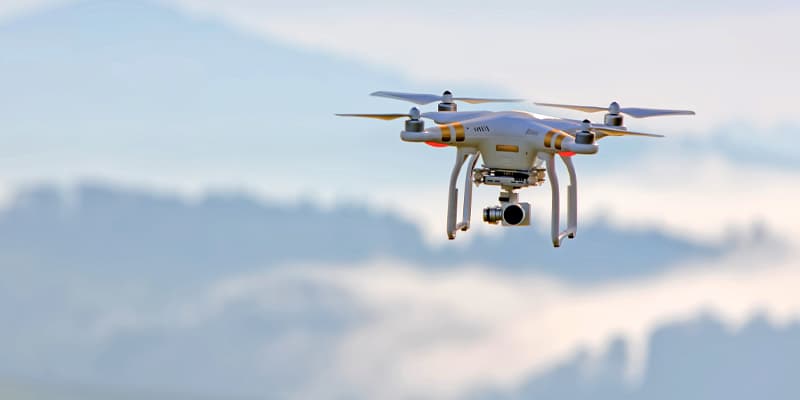The rising role of drones in the insurance space

If you loved playing with remote-controlled airplanes as a kid, you’ll be on board with the role that UAVs (unmanned aerial vehicles), or drones, plays in the 2021 insurance industry. Due to their versatility, drones are used in a variety of industries, and at present, only 17 percent of the overall use of commercial drones belong to the insurance industry. Experts believe this trend will continue to take off in insurance, especially within the P&C sphere.
Interested in taking your company’s digital revolution a step further? Let’s take a look at what drone tech can do for your company, employees, and customers.
Mitigate risk or injury to field agents
Work in 2021 has been heavily restricted by physical distancing rules thus far, and insurance adjusters and policyholders are no exception to these rules. In a world that is recovering from COVID-19, sending drones to conduct site inspections would minimize the amount of human contact involved. Plus, inspections in hazardous areas such as , boilers, car accidents, or damaged buildings have always posed a safety risk to human workers anyway. These can be done quickly and efficiently by drones without anyone sustaining injuries or disturbing the site.
And, let’s not forget that climate change is still causing an incline of natural disasters across Canada and around the world. The aftermath of floods, hurricanes, wildfires, and earthquakes leave sites that are often difficult and unsafe for people to enter. Again, utilizing drone technology in these cases would be able to help insurance agents mitigate injury and avoid waiting around for the scene to be safe.
Improve site monitoring and data collecting
Technology isn’t perfect (we’ve all experienced technical issues) but it’s fast and generally produces accurate — and therefore trustworthy — results when it comes to analyzing data. Following FAA drone regulations, drones can be equipped with fancy gadgets like high res cameras, laser radars, and weather data-collection sensors, making them extremely effective at collecting data as well as monitoring at-risk areas.
Time saved is money saved
In an insightful article on Canadian Underwriter, Adam Malik describes how “technology fills the gap” created by the rising number of climate change related claims and a talent shortage in the insurance industry. Investing in technologies such as AI, task automation, and UAVs can bridge this workload-talent gap by filling in for human agents, especially when it comes to repetitive tasks (that no one enjoyed doing anyway).
The aforementioned fast and accurate traits of drones also make them useful tools for delivering real-time insights for urgent claims such as emergency accidents or large-scale catastrophes. Assessments that once took hours or months with field agents now take as short as 15 minutes. Naturally, this would help adjusters process claims faster. According to this article on Robotics Tomorrow, drones can save the insurance industry approximately $6.8 billion USD. Faster and safer claims processing can also lower health costs for employees who’ve suffered injuries on the job and balance out the distribution of human resources toward other stages of the insurance lifecycle–such as building customer relationships and improving the customer experience.
Like with all things, drones are not infallible and using them come with certain risks and challenges. They can be vulnerable to privacy and technology violations, data loss, system failure, faulty liability coverage, all of which should be considered. But whether you are for or against drone technology, you can’t deny they offer unique opportunities for people working in the insurance space.
Originally published June 18, 2020, updated July 31, 2024
Back to APOLLO MagazineGet a quote in less than a minute
Get no-nonsense coverage that's the best value for your money. Purchase policies from your computer or phone, receive your documents instantly, and save when you buy online.
4.7 rating
Get a quote in less than a minute
Get no-nonsense coverage that's the best value for your money. Purchase policies from your computer or phone, receive your documents instantly, and save when you buy online.
4.7 rating
Relevant articles
Getting insured is as easy as 1 - 2 - 3

Tell us (very little) about yourself
Just tell us your address, your name, email and phone number. And that's it. We'll give you a price in less than a minute.

Pay online easily and securely
You can choose to pay monthly or save money by paying for the entire year in one easy payment.

Get your documents in your inbox - instantly
As soon as you complete your purchase, you'll find your proof of insurance and policy documents waiting for you in your inbox.
Get covered today - it couldn’t be easier
We’ve provided more than 1,000,000 quotes to Canadians just like you. Give it a try!



